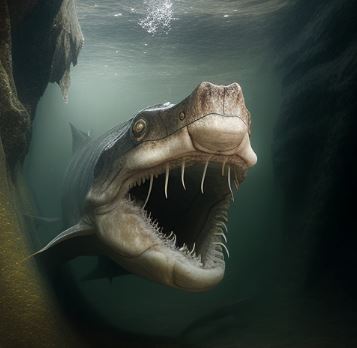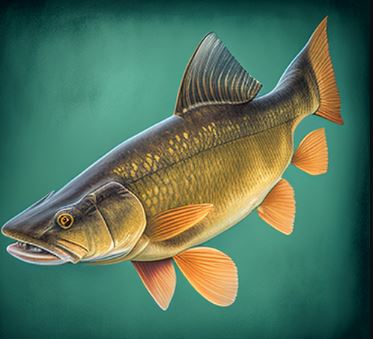Animals That Went Extinct in 2022
Hey there, fellow animal lovers! Today’s blog post is a little bittersweet as we’ll be discussing the animals that went extinct in 2022. It’s important to bring awareness to these heartbreaking events, so we can take action and prevent future extinctions. So, grab a tissue and let’s dive in!
What Animals Went Extinct in 2022?
The Chinese Paddlefish is a freshwater fish that was once found in the Yangtze River in China. Unfortunately, due to overfishing and habitat destruction, the last known Chinese Paddlefish died in 2019, making the species officially extinct in 2022.

The Yangtze Sturgeon, another freshwater fish found in the Yangtze River, was also declared extinct in 2022. Pollution and dam construction were the main factors contributing to the species’ decline.
The Yangtze Sturgeon, also known as the Chinese Sturgeon, is a large freshwater fish that is native to the Yangtze River in China. This fish is an ancient species that has been around for millions of years, and it has played a significant role in Chinese culture and history.
The Yangtze Sturgeon
The Yangtze Sturgeon could grow up to 16 feet in length and can weigh up to 1,100 pounds. It had a long, cylindrical body and a long, pointed snout that it uses to search for food on the riverbed. The fish had five rows of bony scutes along its sides, which help protect it from predators.
Historically, the Yangtze Sturgeon had been an important species for the Chinese people. It is considered a delicacy, and its eggs are highly prized as a gourmet food. Additionally, the fish had played a significant role in Chinese mythology and culture, and it was believed to bring good luck and prosperity to those who catch it.
Despite its cultural and historical significance, the Yangtze Sturgeon is now extinct. Overfishing, habitat destruction, and pollution have all contributed to the decline of the species. In addition, the construction of dams on the Yangtze River had prevented the fish from migrating upstream to its spawning grounds.
The Mountain Mist Frog
The Mountain Mist Frog, also known as the Cave Mist Frog, was a small, nocturnal amphibian that was endemic to the island of Jamaica. Its scientific name was Eleutherodactylus glanduliferoides, and it was known for its unique and intricate mating calls.

The Mountain Mist Frog was a small frog, measuring just 1-1.5 inches in length. It was light brown in color, with a distinctive pattern of dark brown spots and blotches on its back. Its skin was smooth and moist, and it had large, round eyes that were adapted to low light conditions.
The Mountain Mist Frog was once abundant in the forests of Jamaica, but it became extinct in the wild in the late 20th century. The exact causes of its extinction are not fully understood, but there are several factors that are believed to have contributed to its demise.
One of the main factors was habitat loss. The forests of Jamaica have been heavily impacted by deforestation, agriculture, and urbanization, which has led to a loss of suitable habitat for the Mountain Mist Frog. The frog was particularly vulnerable to habitat fragmentation, which made it difficult for populations to interbreed and maintain genetic diversity.
Another factor that contributed to the extinction of the Mountain Mist Frog was the introduction of invasive species. In particular, the introduction of the chytrid fungus, which is a pathogen that affects amphibians, had a devastating impact on frog populations in Jamaica. The fungus infects the skin of amphibians, causing a disease called chytridiomycosis, which can be fatal. The Mountain Mist Frog was particularly susceptible to the fungus, and it is believed that the disease played a significant role in its extinction.
Finally, overcollection of the Mountain Mist Frog for the pet trade is also believed to have contributed to its extinction. The frog was popular among collectors due to its unique mating calls and distinctive appearance, and it is believed that many individuals were taken from the wild to be sold as pets.
Overall, the extinction of the Mountain Mist Frog is a tragic loss, and it serves as a reminder of the fragility of the natural world. Efforts are now underway to conserve other endangered amphibian species in Jamaica, and to prevent similar extinctions from occurring in the future.
Coote’s Tree Snail
The Coote’s Tree Snail, also known as the Christmas Island Forest Snail, was a species of land snail endemic to Christmas Island in the Indian Ocean. It was a unique and beautiful snail with a conical, spiral shell that had a striking red and white striped pattern. Unfortunately, the species was officially declared extinct in 2022, leaving no known living specimens.

The Coote’s Tree Snail was a slow-moving, herbivorous snail that lived in the forested areas of Christmas Island. It was primarily active at night and spent the day hiding under rocks or in crevices to avoid predators. The snail played an important role in the island’s ecosystem by helping to decompose plant matter and recycle nutrients.
The primary cause of the Coote’s Tree Snail’s extinction was the destruction of its habitat. Christmas Island is known for its large-scale phosphate mining industry, which has caused extensive damage to the island’s forests and natural habitats. The snail’s habitat was destroyed and fragmented due to deforestation, and the remaining snails were unable to find suitable food and shelter. In addition to habitat loss, the introduction of non-native species to the island, such as the yellow crazy ant, also contributed to the snail’s decline.
Efforts were made to conserve the Coote’s Tree Snail, including the establishment of captive breeding programs and the implementation of conservation measures on Christmas Island. However, these efforts were not enough to save the species from extinction.
The loss of the Coote’s Tree Snail is a tragic reminder of the impact that human activities can have on fragile ecosystems and endangered species. It highlights the need for greater efforts to protect and conserve our natural habitats and the species that call them home. Without action, more species may face the same fate as the Coote’s Tree Snail, and the world would be a poorer place as a result.
The Giant Atlas Barbel
The Giant Atlas Barbel (Luciobarbus atlantis) was a species of freshwater fish that was native to the Atlas Mountains in Morocco. It was a large fish, growing up to 1.5 meters in length, and was known for its impressive size and strength. Unfortunately, the Giant Atlas Barbel is now extinct, and it is believed that human activities were the primary cause of its extinction.

One of the main reasons for the Giant Atlas Barbel’s extinction was habitat loss. The Atlas Mountains region of Morocco is highly populated, and human activities such as deforestation, dam construction, and agriculture have led to the destruction of much of the species’ natural habitat. As a result, the Giant Atlas Barbel’s range became severely restricted, and it was unable to find suitable breeding and feeding grounds.
Overfishing was also a significant factor in the Giant Atlas Barbel’s extinction. The species was highly prized by local fishermen for its meat and was caught in large numbers using unsustainable fishing practices. The Giant Atlas Barbel was a slow-growing species with a low reproductive rate, which made it particularly vulnerable to overfishing.
Pollution was another contributing factor to the Giant Atlas Barbel’s extinction. Industrial and agricultural runoff polluted the rivers and streams where the species lived, leading to a decline in water quality and the destruction of the Giant Atlas Barbel’s food sources.
Lastly, the introduction of non-native fish species also played a role in the Giant Atlas Barbel’s extinction. Non-native species, such as trout, were introduced into the rivers and streams of the Atlas Mountains for sport fishing purposes. These species outcompeted the Giant Atlas Barbel for food and habitat, making it even more difficult for the species to survive.
In summary, the Giant Atlas Barbel’s extinction was the result of multiple factors, including habitat loss, overfishing, pollution, and the introduction of non-native fish species. It serves as a reminder of the importance of preserving natural habitats and ensuring sustainable fishing practices to protect vulnerable species from extinction.
The Ivory-Billed Woodpecker
The Ivory-Billed Woodpecker is a large, striking bird species that was once found in the southern United States, particularly in the old-growth forests of the southeastern United States. The bird is known for its distinctive plumage, with a black and white striped back, ivory-colored bill, and striking red crest. The Ivory-Billed Woodpecker was one of the largest woodpecker species in the world, with a wingspan of over two feet.
The Ivory-Billed Woodpecker was once abundant in the southeastern United States, ranging from Texas to Florida, and as far north as the Carolinas. However, the bird began to decline (not unlike small owls) in the late 19th century due to habitat loss, as the old-growth forests that it relied upon for nesting and foraging were rapidly destroyed by logging and urbanization. By the early 20th century, the Ivory-Billed Woodpecker was considered rare, and by the 1940s it was thought to be extinct.
However, in 2004, there were several reported sightings of the Ivory-Billed Woodpecker in the swamps of Arkansas, leading to a flurry of excitement and renewed interest in the bird’s conservation. Despite extensive searches and efforts to protect the bird’s habitat, no conclusive evidence of its continued existence has been found, and the Ivory-Billed Woodpecker is still considered extinct.

The main causes of the Ivory-Billed Woodpecker’s extinction were habitat destruction and fragmentation, as well as hunting and collection. The bird’s large size and striking appearance made it a popular target for hunters and collectors, and its habitat was rapidly destroyed as the southeastern United States was settled and developed. Despite efforts to protect the bird and its habitat in the early 20th century, it was too little too late, and the Ivory-Billed Woodpecker was lost forever.
The loss of the Ivory-Billed Woodpecker is a tragic reminder of the importance of protecting and conserving our natural heritage. The bird was not only a beautiful and iconic species, but also played an important role in its ecosystem as a keystone species, shaping the structure of the forest through its nesting and foraging habits. Its extinction is a loss not only for the southeastern United States, but for the world as a whole.
Related Questions:
For those wondering what exactly extinction means, it’s the complete disappearance of a species from the planet. Causes of animal extinction can vary from habitat destruction to pollution, and unfortunately, a staggering number of animal species go extinct each year. In fact, it’s estimated that up to 1 million species are at risk of extinction due to human activities.
The effects of animal extinction on ecosystems are profound. Losing a species can disrupt entire food chains and cause a ripple effect throughout the ecosystem. This can result in things like decreased biodiversity, soil erosion, and even climate change.
Habitat Destruction, Overfishing, and Pollution
Habitat destruction is one of the leading causes of animal extinction, and it’s something we can help prevent by supporting conservation efforts and choosing sustainable products.
Overfishing is another major contributor to animal extinction, and by being mindful of the seafood we consume, we can help protect vulnerable species.

Pollution can also have a devastating impact on animal populations, so reducing our carbon footprint and supporting clean energy initiatives can make a big difference.
Disease and hybridization can also contribute to animal extinction, but by practicing good hygiene and avoiding the introduction of non-native species, we can help prevent these issues.
Hunting, whether for sport or traditional practices, can have severe consequences for animal populations, so it’s important to support laws and regulations that protect vulnerable species.
FAQ:
The International Union for Conservation of Nature (IUCN) is an organization that works to conserve biodiversity and promote sustainability worldwide. They provide resources and support for conservation efforts around the world.
The Red List is a database created by the IUCN that assesses the conservation status of different species. It’s widely recognized as the most comprehensive and authoritative resource on the status of animal and plant species worldwide.
The American Birding Association is an organization that promotes birding and bird conservation in North America. They offer resources and support for birding enthusiasts and conservation efforts.
Conclusion on Extinct Species
It’s heartbreaking to think of the animals we’ve lost in 2022, but it’s important to remember that there’s still hope for the species that are on the brink of extinction. By supporting conservation efforts, reducing our impact on the environment, and being mindful of our impact on the planet
Pingback: Do Owls Hibernate in the Winter? - Small Animal Planet